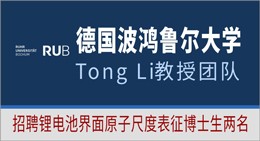当前位置:
X-MOL 学术
›
Int. J. Appl. Earth Obs. Geoinf.
›
论文详情
Our official English website, www.x-mol.net, welcomes your
feedback! (Note: you will need to create a separate account there.)
A benchmark approach and dataset for large-scale lane mapping from MLS point clouds
International Journal of Applied Earth Observation and Geoinformation ( IF 7.6 ) Pub Date : 2024-09-04 , DOI: 10.1016/j.jag.2024.104139 Xiaoxin Mi, Zhen Dong, Zhipeng Cao, Bisheng Yang, Zhen Cao, Chao Zheng, Jantien Stoter, Liangliang Nan
International Journal of Applied Earth Observation and Geoinformation ( IF 7.6 ) Pub Date : 2024-09-04 , DOI: 10.1016/j.jag.2024.104139 Xiaoxin Mi, Zhen Dong, Zhipeng Cao, Bisheng Yang, Zhen Cao, Chao Zheng, Jantien Stoter, Liangliang Nan
Accurate lane maps with semantics are crucial for various applications, such as high-definition maps (HD Maps), intelligent transportation systems (ITS), and digital twins. Manual annotation of lanes is labor-intensive and costly, prompting researchers to explore automatic lane extraction methods. This paper presents an end-to-end large-scale lane mapping method that considers both lane geometry and semantics. This study represents lane markings as polylines with uniformly sampled points and associated semantics, allowing for adaptation to varying lane shapes. Additionally, we propose an end-to-end network to extract lane polylines from mobile laser scanning (MLS) data, enabling the inference of vectorized lane instances without complex post-processing. The network consists of three components: a feature encoder, a column proposal generator, and a lane information decoder. The feature encoder encodes textual and structural information of lane markings to enhance the method’s robustness to data imperfections, such as varying lane intensity, uneven point density, and occlusion-induced incomplete data. The column proposal generator generates regions of interest for the subsequent decoder. Leveraging the embedded multi-scale features from the feature encoder, the lane decoder effectively predicts lane polylines and their associated semantics without requiring step-by-step conditional inference. Comprehensive experiments conducted on three lane datasets have demonstrated the performance of the proposed method, even in the presence of incomplete data and complex lane topology. Furthermore, the datasets used in this work, including source ground points, generated bird’s eye view (BEV) images, and annotations, will be publicly available with the publication of the paper. The code and dataset will be accessible through here .
中文翻译:

用于 MLS 点云大规模车道映射的基准方法和数据集
带有语义的准确车道地图对于各种应用至关重要,例如高清地图 (HD Maps)、智能交通系统 (ITS) 和数字孪生。手动注释泳道是劳动密集型且成本高昂的,这促使研究人员探索自动泳道提取方法。本文提出了一种端到端的大规模车道映射方法,该方法同时考虑了车道几何和语义。这项研究将车道标线表示为具有均匀采样点和相关语义的折线,从而可以适应不同的车道形状。此外,我们提出了一个端到端网络,从移动激光扫描 (MLS) 数据中提取车道折线,无需复杂的后处理即可推断矢量化车道实例。该网络由三个组件组成:特征编码器、列建议生成器和通道信息解码器。特征编码器对车道标记的文本和结构信息进行编码,以增强该方法对数据缺陷的鲁棒性,例如变化的车道强度、不均匀的点密度和遮挡引起的不完整数据。列建议生成器为后续解码器生成感兴趣的区域。利用特征编码器的嵌入式多尺度功能,通道解码器可以有效地预测通道折线及其相关语义,而无需逐步进行条件推理。在三通道数据集上进行的综合实验证明了所提出的方法的性能,即使在数据不完整和通道拓扑复杂的情况下也是如此。此外,这项工作中使用的数据集,包括源地面点、生成的鸟瞰图 (BEV) 图像和注释,将在论文发表时公开提供。 代码和数据集可通过此处访问。
更新日期:2024-09-04
中文翻译:

用于 MLS 点云大规模车道映射的基准方法和数据集
带有语义的准确车道地图对于各种应用至关重要,例如高清地图 (HD Maps)、智能交通系统 (ITS) 和数字孪生。手动注释泳道是劳动密集型且成本高昂的,这促使研究人员探索自动泳道提取方法。本文提出了一种端到端的大规模车道映射方法,该方法同时考虑了车道几何和语义。这项研究将车道标线表示为具有均匀采样点和相关语义的折线,从而可以适应不同的车道形状。此外,我们提出了一个端到端网络,从移动激光扫描 (MLS) 数据中提取车道折线,无需复杂的后处理即可推断矢量化车道实例。该网络由三个组件组成:特征编码器、列建议生成器和通道信息解码器。特征编码器对车道标记的文本和结构信息进行编码,以增强该方法对数据缺陷的鲁棒性,例如变化的车道强度、不均匀的点密度和遮挡引起的不完整数据。列建议生成器为后续解码器生成感兴趣的区域。利用特征编码器的嵌入式多尺度功能,通道解码器可以有效地预测通道折线及其相关语义,而无需逐步进行条件推理。在三通道数据集上进行的综合实验证明了所提出的方法的性能,即使在数据不完整和通道拓扑复杂的情况下也是如此。此外,这项工作中使用的数据集,包括源地面点、生成的鸟瞰图 (BEV) 图像和注释,将在论文发表时公开提供。 代码和数据集可通过此处访问。































 京公网安备 11010802027423号
京公网安备 11010802027423号